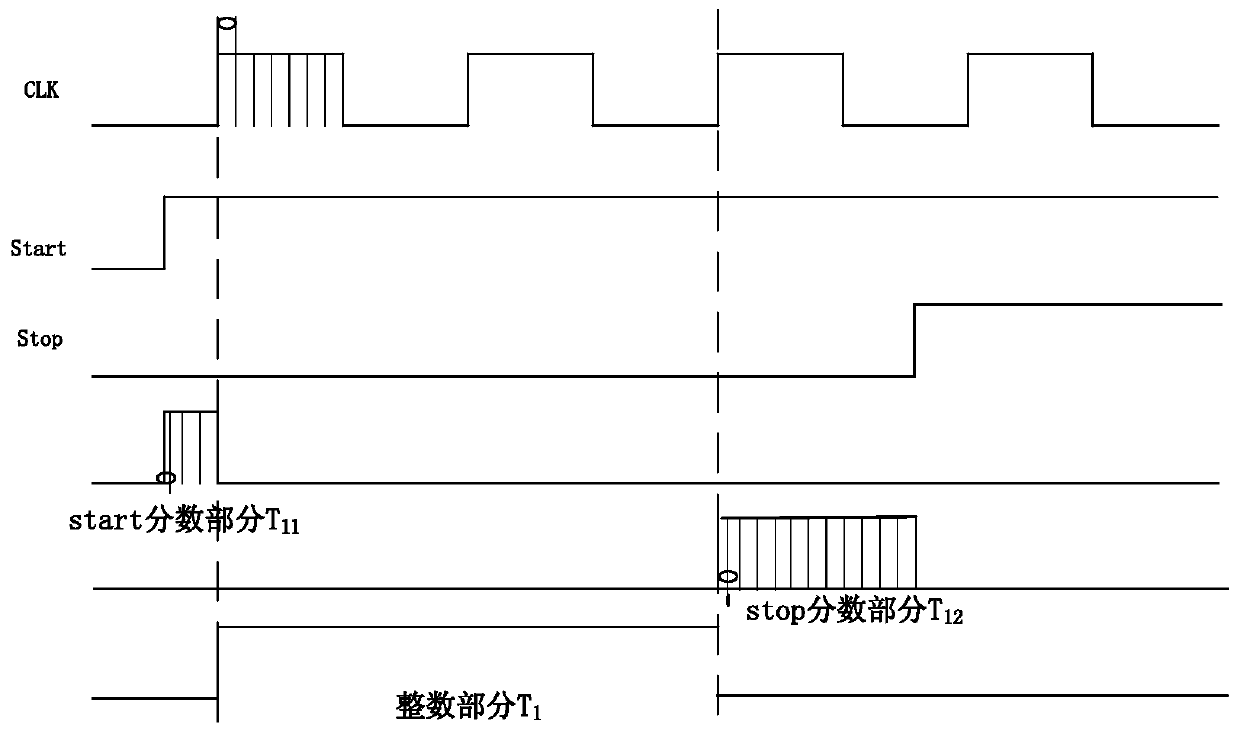A Time-to-Digital Converter Based on Delay Locked Loop
A delay-locked loop and time-to-digital technology, which is used in time-to-digital converters, electrical unknown time interval measurement, and time interval measurement devices, etc., can solve high power consumption, poor accuracy, and can not meet the practical application of vehicle lidar problem, to achieve the effect of reducing power consumption area, improving accuracy and stability, and improving anti-interference ability
- Summary
- Abstract
- Description
- Claims
- Application Information
AI Technical Summary
Problems solved by technology
Method used
Image
Examples
Embodiment 1
[0042] See figure 2 , figure 2 A schematic block diagram of a digital-to-time converter based on a delay-locked loop provided by an embodiment of the present invention includes: a delay-locked loop 100 and a TDC measurement part, wherein,
[0043] The delay-locked loop 100 receives the reference clock signal, delays the reference clock signal to generate an equally spaced co-frequency clock cluster signal, and outputs the reference clock signal and the equally spaced co-frequency clock cluster signal;
[0044] Further, see image 3 , image 3It is a schematic diagram of a module of a delay-locked loop provided by an embodiment of the present invention. The delay-locked loop 100 is composed of a phase detector 101, a charge pump 102, a filter 103 and a delay chain 104; the phase detector 100 receives the reference clock signal and Delay the clock signal (for example, the delayed clock signal is delayed by one clock cycle), compare the phases of the reference clock signal a...
PUM
 Login to View More
Login to View More Abstract
Description
Claims
Application Information
 Login to View More
Login to View More - R&D
- Intellectual Property
- Life Sciences
- Materials
- Tech Scout
- Unparalleled Data Quality
- Higher Quality Content
- 60% Fewer Hallucinations
Browse by: Latest US Patents, China's latest patents, Technical Efficacy Thesaurus, Application Domain, Technology Topic, Popular Technical Reports.
© 2025 PatSnap. All rights reserved.Legal|Privacy policy|Modern Slavery Act Transparency Statement|Sitemap|About US| Contact US: help@patsnap.com



